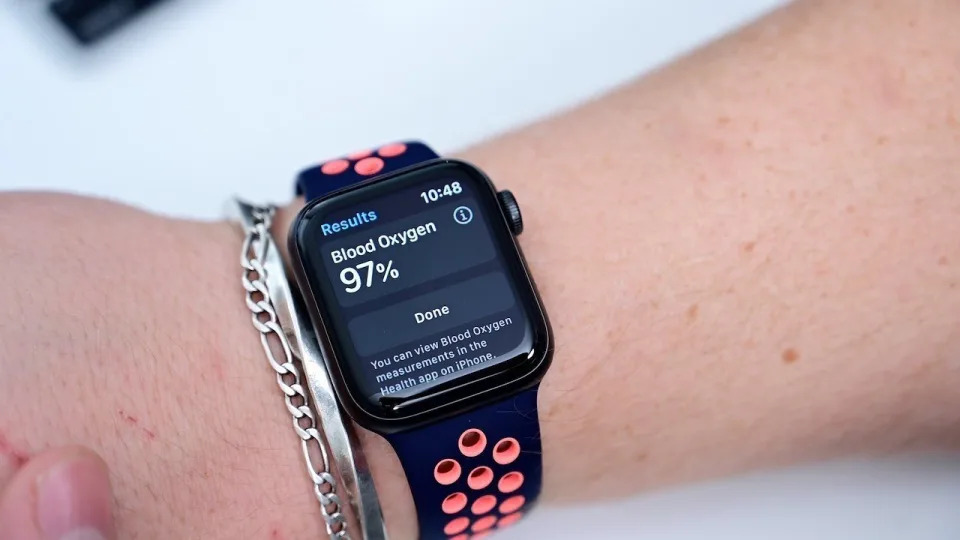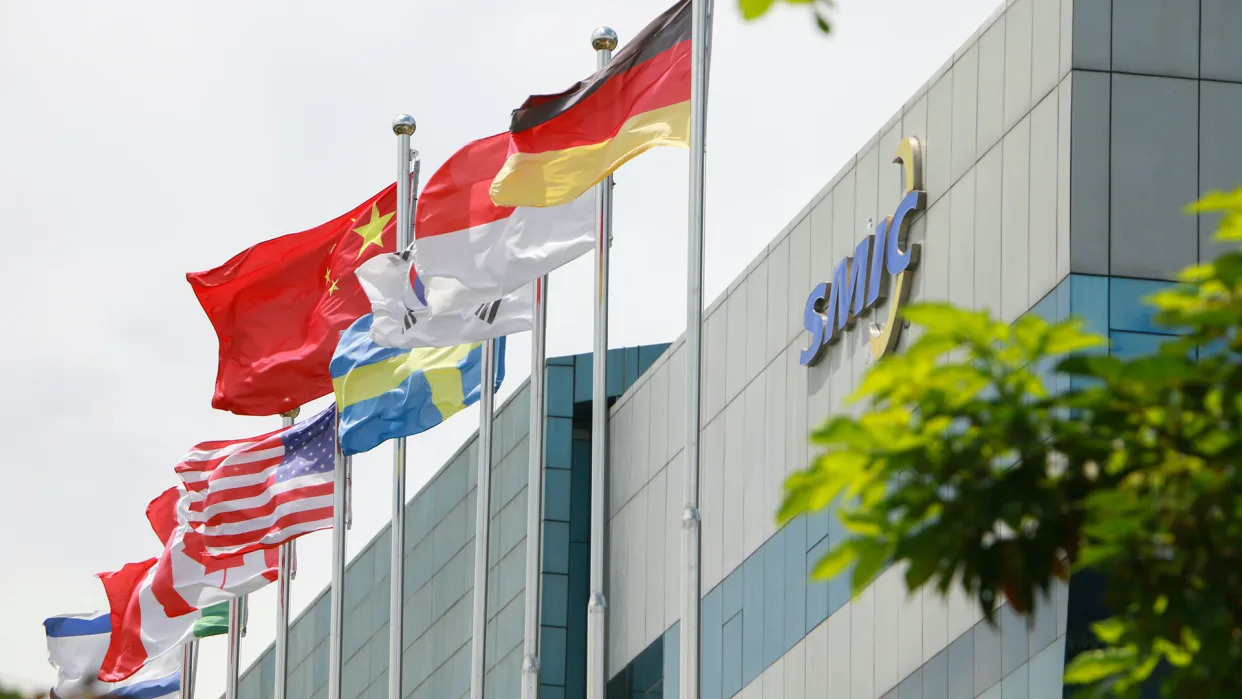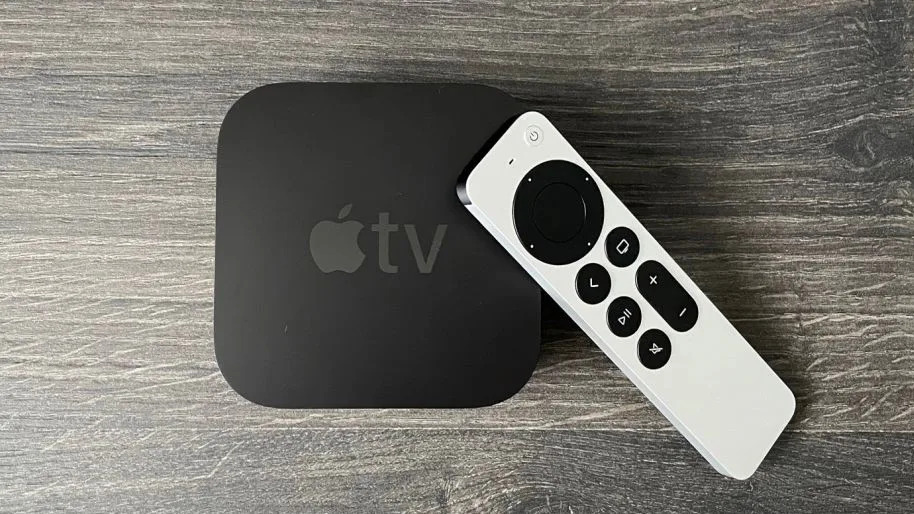Chinese foundry SMIC may have broken the 5nm process barrier, as evidenced by a new Huawei laptop listed with an advanced chip with 5nm manufacturing tech — a feat previously thought impossible due to U.S sanctions.
This year, SMIC shocked the world after it began mass production of Huawei's HiSilicon Kirin 9000S processor using its second-gen 7nm process technology. But the company seems to have at least one more trick up its sleeve: a 5nm fabrication process that is either already in use for high-volume manufacturing (HVM) or is in the final stages of its development. In fact, Huawei now lists a chip made on a 5nm-class process node — an eight-core Arm-based HiSilicon Kirin 9000C processor with Arm Mali-G78 graphics for laptops — on its website.
A posting on Huawei's website claims the Qingyun L540 laptop is "equipped with the Kirin 9006C chip, utilizing a 5nm process technology, eight cores, with a maximum clock speed of up to 3.13 GHz, offering higher performance, lower power consumption, and faster processing speeds."
The Kirin 9006C's general-purpose cores are listed at up to 3.13 GHz, which is only slightly lower than the clocks that TSMC and Apple could wring out of the original TSMC N5 process technology (the maximum frequency for Apple's M1 high-performance cores is 3.20 GHz). Meanwhile, the Kirin 9006C's peak clock rate looks similar to another chip, the Kirin 9000, which was produced for Huawei by TSMC.
Indeed, when TSMC began to produce chips made on its N5 (5nm-class) fabrication technology in mass quantities in early Q2 2020, Huawei was not blacklisted by the U.S. Department of Commerce, and the foundry could still ship 5nm chips — which it did in huge volumes. Huawei formally introduced its TSMC N5-based Kirin 9000 SoC in late August 2020 and confirmed that the chip was made in Taiwan.
There are many similarities between the Kirin 9000 and the Kirin 9006C, which some might argue indicates Huawei is leveraging stock it obtained three years ago for its current PCs. While this could be true, keeping a massive quantity of premium processors (which were expensive to make on TSMC's then leading-edge node) for three years doesn't make a lot of sense, especially bearing in mind that the original Kirin 9000 featured a built-in 5G modem (something the Kirin 9006C presumably lacks) and could be used for a premium smartphone rather than for an inexpensive laptop. As such, it is possible that the company has turned to SMIC to create the processors.
It isn't entirely surprising that SMIC could have broken through the 5nm barrier, as persistent industry chatter has indicated the foundry is close to further exceeding the limits imposed by US sanctions. "SMIC is preparing a 5nm process through DUV, and photomask usage is expected to increase further," an expert in the semiconductor industry recently told The Elec.
While an anonymous commenter is not a particularly reliable source, this isn't the first time that SMIC's 5nm technology, which relies solely on deep ultraviolet (DUV) lithography, has been mentioned. SMIC briefly mentioned its post-7nm fabrication process in late 2020, and an industry expert further reemphasized SMIC's 5nm ambitions in September 2022. Both comments indicate that SMIC has been working on a DUV-only 5nm node for quite some time. The technology may be ready by now, but there isn't an independent confirmation yet.
SMIC does have chipmaking tools that could conceivably be used to create 5nm processors. The ASML Twinscan NXT:2000i features a ≤38nm resolution, which is good enough for 7nm-class mass production using double-patterning lithography techniques. However, a finer resolution is required for 5nm-class process technologies. Chipmakers can use triple or even quadruple patterning to produce it. This lithographic technique involves splitting a complex pattern into several simpler patterns, which are then printed sequentially to achieve higher precision and detail. Multi-patterning is a tricky process that affects yields and the number of chips per wafer that can be used, so typically, it has been limited due to its impact on chip costs.
We don't know for sure whether SMIC has initiated mass production of chips on its 5nm-class technology. Given the tensions between the U.S. and China in general and curbs against Huawei and SMIC in particular, it is unlikely that either company will fully disclose its actual technological capabilities. On the one hand, it is prestigious to produce 5nm-class chips despite the U.S. crackdown; on the other hand, neither Huawei nor SMIC want their partners and tool suppliers (or how they obtain equipment or actual chips) to be discovered by the U.S. and its allies.
Apple Watch import ban: what you need to know.
There is a possibility of an import ban in the U.S. on the Apple Watch. Here's what you need to know before it potentially goes into effect on Christmas Day, 2023.
Apple Watch Series 9
Following a recommendation by the US International Trade Commission (ITC) to instigate an Apple Watch import ban in the United States in late October, the Biden administration is partway into its 60-day review window. If the administration believes an Apple Watch import ban should go ahead, that will restrict what Apple Watches the company can import into the United States at the end of 2023.
The timing of the order means the White House effectively has until Christmas day to make its decision on the matter.
Apple Watch import ban: the story so far
Medical company Masimo filed a lawsuit with the U.S. District Court in 2020, claiming Apple stole trade secrets and violated patents with the blood pulse oximeter in the Apple Watch. This was followed up by a U.S. International Trade Commission filing in 2021.
Masimo accused Apple of unfairly copying the blood oxygen sensing feature of its products.

A blood oxygen level reading on an Apple Watch
It was also reasoned by Masimo that the U.S. public would not be affected by an Apple Watch import ban as the sensor isn't "essential to the public health or welfare." This was due to Apple's warnings in fine print that the measurements from the sensor "should not be relied upon for medical purposes," Masimo declared.
Though the District Court trial ended in a mistrial and didn't resume, the ITC did rule in favor of Masimo in January.
On October 26, the ITC issued its order that would bar Apple from importing any Apple Watch models that violated Masimo's patents, following a full review. That decision then triggered the 60-day review period for the White House.
"Masimo has wrongly attempted to use the ITC to keep a potentially lifesaving product from millions of U.S. consumers while making way for their own watch that copies Apple," an Apple spokesperson said. "While today's decision has no immediate impact on sales of Apple Watch, we believe it should be reversed, and will continue our efforts to appeal."
Apple Watch import ban: What happens next
The 60-day decision period from the White House does not guarantee an Apple Watch import ban will actually take place, but there's a chance that it will occur.
If the Biden administration agrees, then the import and sales ban of already-imported devices will be enforced from December 25, in the tail-end of Apple's peak sales period. This would include preventing the import of affected models, as well as their sale, within the United States.
If left uncontested, the Apple Watch import ban will theoretically last until the patent itself expires in August 2028.
Apple Watch Series 9
In the instance that the White House does implement the Apple Watch import ban, Apple can still appeal the decision, but it cannot until after the 60-day period concludes. Due to the fairly lengthy nature of the appeals process, Apple may end up waiting a considerable amount of time for the ban to be lifted.
Furthermore, a filing for an appeal with the Federal Circuit would most likely include a request by Apple to hold off the ban while another review takes place. However, there is no guarantee that an Apple Watch import ban would be temporarily lifted by that court.
What an Apple Watch import ban means for consumers
If the Apple Watch import ban is implemented, simply put, the selection of Apple Watch models U.S. consumers could buy will suddenly get a lot smaller.
The Apple Watch import ban will only impact models that allegedly infringe on the patent, which would include the Apple Watch Series 6 and later models. Earlier models and the Apple Watch SE do not offer the feature and are unaffected.
Under the ITC order, the ban only applies on the Apple Watch on Christmas Day itself. New units bought before the Apple Watch import ban's implementation will still be legal to use by consumers.
Apple's warranties will also be operating as normal, so any purchased devices within warranty can still be serviced by the company.
Consumers in other territories not affected by the ITC won't feel the effects of the ban.
What Apple can do
As it has done in the past for other import or sales bans, Apple will almost certainly appeal the order and do whatever it can to get it lifted. With the United States being such a major market, it has a vested interest to do just that.
However, since this can be a lengthy and expensive process, Apple may not necessarily want to leave the U.S. as the only market it cannot sell the Apple Watch within.
One other way to mitigate the Apple Watch import ban is to change the Apple Watch itself.
Rather than keep the feature in its current state, Apple could simply remove it from future models. If there's no infringing component inside the Apple Watch, it isn't affected by the import ban, much like the Apple Watch SE.
Apple could also come up with an alternate way to perform the function in the Apple Watch, though that will probably increase research and development costs. It may also take too long to perform and actually implement, compared to fighting the legal battle.
For the moment, all the company and consumers can do is wait and see what the Biden administration will do about it.
Then again, with its lobbying power, there could still be a chance of a Christmas miracle for Apple's personal computing device, if it plays its cards right.
Apple TV update coming soon that marks the end of an era.
Apple TV 4K (2021) Totally
All things must come to an end and such is the case for the iTunes Store... well, on Apple TV boxes anyway.
Apple will reportedly release its tvOS 17.2 update in the coming week and with it will remove the iTunes Movies and iTunes TV Shows apps from the platform.
Instead, Apple TV 4K and older box owners will be able to rent and purchase films and TV series through the TV app. And any previously acquired content will be solely found there from the moment the new update arrives.
That's no hardship, of course, we've been able to access our own shows and movies from the TV app for a while now, and make purchases from there (on Apple products anyway – you can't through a third-party device as yet). But, if you're used to heading to the iTunes Store for all your video needs, you'll have to adjust your habit soon.
As 9to5Mac points out, those who have already downloaded the beta version of tvOS 17.2 have already seen messages informing them of the switchover. Although the iTunes Store app still exists on iPhone and iPad as things stand. Movies and TV shows are still available to buy or rent there alongside digital music.
Surely it won't be long for that to be shut down too, though, as Apple points people to its own services. To be honest, making it easier to find everything in the one app is no bad thing – Music for music, TV for video.
Change is inevitable and who's against making things more simple?
Certainly, it's my opinion that the latest Apple TV 4K is one of, if not the best, media streamers around, and the simpler the user experience becomes, the more enjoyable it all gets. After all, it's the content we all went to watch, not a myriad of menu screens to access it.
Much-desired iPhone feature may not arrive until 2027.
We’ve heard a lot in recent years about an iPhone that ditches the Dynamic Island, placing the selfie camera and FaceID technology beneath the glass for a clean, full display. But despite a growing number of Android phones adopting the design, for the iPhone it still seems a ways off.
In 2022, oft-reliable Apple analyst Ming-Chi Kuo claimed that a full display could arrive with next year’s iPhone 16, though others in the same field have since suggested that it may take several more iterations of the iPhone before the tech giant is able to make the change.
In the latest development, a report from South Korean news site The Elec this week claims that an Apple supplier there — LG Innotek — has started to develop an under-display camera (UDC) that could lead to the first iPhone with a display uninterrupted by the Dynamic Island or some other smaller cutout.
UDC technology is a challenge as it has to find a way of getting an adequate amount of light to the sensor, as some of it will be lost as it passes through the display. To overcome this obstacle, LG Innotek is working on a “freeform optic” multiple lens system, which, according to MacRumors, “can reduce optical aberrations and increase the light intensity ratio around the optical module to improve peripheral image quality.”
It’s been suggested that as a stepping stone to a full display, Apple will first place the FaceID technology beneath the screen, possibly with the iPhone 17 Pro, expected in 2025. That would allow the iPhone Pro models to replace the Dynamic Island for a smaller circular cutout for the selfie camera before moving to a full display two years later with the iPhone 19 Pro.
Of course, this is based on what we’ve been hearing through the grapevine, and so the plan could change, especially if unexpected technical challenges arise. But overall, it seems like a reasonable timeline that Apple could follow.
Until then, iPhone owners will have to continue with the somewhat undynamic Dynamic Island, a design feature that some believe was “the biggest iPhone mistake in years,” though others have come to love it (a little bit).





